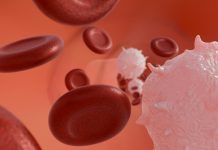Stefan Doroszkowski, Managing Director at Amethyst Radiotherapy Group UK, shares his stance on responding to the cancer care crisis, addressing the chasm in UK cancer care
Cancer survival has doubled in the last 40 years. Now, 50% of people diagnosed with cancer survive for a further 10 years; with one-year survival rates now at 74% compared to 45% in 1971. (1) But despite such progress, UK cancer care is in crisis; facing long-term, varied and complex challenges, as demand only continues to increase.
While we pioneer progress in some areas, we continue to rely on increasingly outdated models of care in others. This has resulted in a system struggling to meet demand.
There are Centres of Excellence in Cancer Care across the country achieving great results. However, new techniques (often developed in these centres) need to be fast-tracked for wider mainstream service delivery.
New techniques need to be fast-tracked for service delivery
For example, most NHS Cancer Centres are improving radiotherapy delivery; by adopting Stereotactic Radiotherapy and Hypofractionation, which deliver more precisely targeted radiation treatment to patients with vastly improved outcomes sparing less damage to healthy tissues and organs at risk.
Surgical outcomes for UK cancer care have also vastly improved following the implementation of the Calman Hine guidelines in the late 90s which organised Cancer Care into specialists in each relevant discipline for Multi-Disciplinary cancer Teams (MDTs).
Surgical outcomes have vastly improved following Calman Hine guidelines
NHS England is now investing in national Genomics programmes to support the roll-out of molecular profiling diagnostic techniques. These identify gene mutations driving and affecting tumour behaviour, while further improving access to therapeutic targeted interventions based on tumour biomolecular behaviour.
UK survival rates are among the worst in developed economies
However, UK survival rates and outcomes are among the worst in developed economies including North America, Scandinavia and Australia- with the lowest diagnostic capacity in Europe and OECD countries. (2)
The UK sits 3-5 percentage points below the European average, (3) despite the endless efforts of NHS staff. And all of this before COVID arrived; blowing open a chasm in cancer care, exacerbating already mounting waiting times and restricting access to care.
50% of new cancer diagnoses occur too late
Much of the shortfall can be attributed to 50% of new cancer diagnoses occurring too late, at Stages Three to Four, (4) well below NHS England’s aspiration for 75% of new cancer diagnoses at Stage One or Two. (5) As it is well established, diagnosis at an earlier stage improves the chances of more successful treatment, so this is a crucial target to achieve.
By way of illustration, 100% of Breast Cancer patients diagnosed at Stage 1 survived their disease for at least one year, compared to 66% of patients diagnosed at Stage 4. Five-year survival rates for Breast Cancer reduce from 90% at Stage 2 to 73% at Stage 3; and down to 25% for diagnosis at Stage 4.
Addressing the UK’s poor uptake of new technologies and best practices should improve diagnostic abilities and treatment options.
NHS aims to save 55,000 lives from Cancer by 2028
There is currently an estimated £1 Billion disparity in Radiotherapy funding required to meet demand. (6) Critical new investment in this capital-intensive but hugely cost-effective service is required. Slow adoption of Cancer Genomics or Molecular Profiling in the NHS causes over 6000 missed opportunities for life-saving interventions in skin, lung and bowel cancers every year. (7)
Macmillan has reported over 650,000 cancer patients experienced disrupted cancer treatment during the pandemic and as many as 100,000 new cancer diagnoses were not picked up. Even now it is estimated the NHS is still missing 32,000 new cancer diagnoses compared to pre-pandemic. (8) The NHS is having to work harder than ever to deliver its Cancer Care Recovery Plan.
NHS England says it is prioritising cancer treatment with a focused Long-Term Plan which aims to realise 75% of all diagnoses in Stages One and Two and save 55,000 lives from Cancer by 2028.
NHS England is expected to publish its Long-Term Plan shortly
With all of this considered and irrespective of the current economic outlook, the NHS cannot continue to “do-it-all” while expecting to realise its aspirations and a paradigm shift on its own. Private investment and provision in UK cancer care services currently account for 1-2% of the total at best.
This is very different to many other developed health economies in the world which leverage materially higher private investment achieving better treatment outcomes. If the Government is serious about a solution, it must get serious about encouraging private investment to support better UK cancer care delivery.
References
- Cancer Research UK
- OECD: Magnetic Resonance Imaging unit data set (2018) and Computed Tomography unit data set (2018)
- King’s Fund Review of international evidence, Foot & Harrison (2011); Eurocare 5 Report on Cancer Survival in Europe; and the Lancet, Vol 15, Issue 1 (2014)
- Improving Outcomes: a strategy for Cancer: Third Annual Report
- NHS England’s Long-Term Plan for Cancer
- Based on current number of Linear Accelerators in the UK against known demand (Recommendations for achieving a world-class radiotherapy service in the UK, final report prepared for Cancer Research UK, Dr Joe Cullen et al, and The Tavistock Institute
- “Molecular Diagnostics Provision in England for Targeted Cancer Medicines in the NHS” report for CRUK by Concentra (August 2015)
- Macmillan Cancer Support











